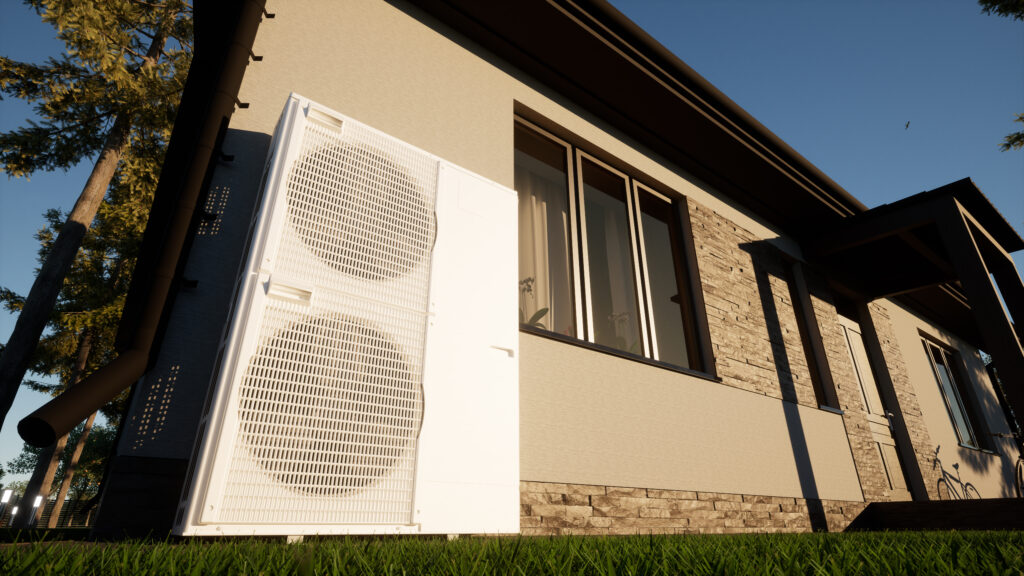For homeowners who have invested in a high-quality Amana heat pump, understanding its features and functionalities is essential for optimizing performance and efficiency. However, navigating through heat pump terminology can be confusing, especially with the various technical terms and acronyms used in the industry. This is why we’ve created a comprehensive glossary to help you grasp the language of heat pumps and make the most of your Amana system.
At I Heart Amana, we specialize in providing reliable Amana HVAC systems, air conditioners, packaged units, and heat pumps, all designed to deliver outstanding performance and supported by warranties and excellent consumer reviews.
Understanding Essential Heat Pump Terminology
- Air Handler: The air handler is an important component of your heat pump system and is responsible for circulating the conditioned air throughout your home. It contains a blower, heating and cooling coils, and various safety devices, all working together to ensure proper airflow and temperature regulation.
- Auxiliary Heat: Auxiliary heat refers to a secondary source of heat used by your heat pump to supplement the primary heating source when necessary. This can be an electric resistance heating element or a fossil fuel furnace, which kicks in during times of extreme cold when your heat pump struggles to keep up with the home’s heating demands.
- Balanced Point: The balanced point is the outdoor temperature at which your heat pump’s heating capacity meets your home’s heat loss. Beyond this point, the system will rely on auxiliary heating to maintain the desired indoor temperature efficiently.
- BTU (British Thermal Unit): BTU measures thermal energy used to quantify heat output. One BTU represents the heat required to raise the temperature of one pound of water by one degree Fahrenheit. In the context of heat pumps, BTUs are used to describe the system’s heating and cooling capacity.
- COP (Coefficient of Performance): The COP is an efficiency metric that measures the energy output of a heat pump system against the energy input required to run it. A higher COP indicates greater energy efficiency and lower operating costs.
- Defrost Cycle: During cold weather, frost can accumulate on the outdoor coil of your heat pump. The defrost cycle is an automatic system function designed to periodically melt this frost, optimizing heat exchange and ensuring efficient performance.
Key Components of Heat Pump Systems
- Compressor: The compressor is a vital part of your heat pump system, responsible for circulating refrigerant between the indoor and outdoor units. It increases the pressure and temperature of the refrigerant, enabling it to capture and release heat during the heating and cooling processes.
- Evaporator Coil: The evaporator coil is the indoor component of your heat pump system, where the refrigerant absorbs heat from the indoor air. This coil effectively cools the air that is then circulated throughout your home.
- Condenser Coil: The condenser coil is the outdoor component of your heat pump system, where the refrigerant releases heat to the outdoor air. In heating mode, the roles of the evaporator and condenser coils are reversed, with the indoor coil releasing heat and the outdoor coil absorbing it.
- Expansion Valve: The expansion valve is a critical component that regulates the flow of refrigerant between the high-pressure and low-pressure sides of your heat pump system. By changing the refrigerant’s pressure and state, the expansion valve helps optimize heat transfer efficiency during both heating and cooling cycles.
Efficiency Ratings and Operational Terms
- SEER (Seasonal Energy Efficiency Ratio): SEER is a system efficiency rating that measures the cooling output of a heat pump during a typical cooling season, divided by the total energy (in watt-hours) consumed. A higher SEER rating indicates a more energy-efficient cooling system.
- HSPF (Heating Seasonal Performance Factor): HSPF is a system efficiency rating that represents the total heating output of a heat pump during a typical heating season, divided by the total energy (in watt-hours) consumed. A higher HSPF rating signifies greater energy efficiency during the heating season.
- EER (Energy Efficiency Ratio): EER is an efficiency metric that measures the cooling output of a heat pump, divided by the energy input in watt-hours, at a specific outdoor temperature. While similar to SEER, the EER rating is used to evaluate heat pump efficiency under more controlled conditions.
- Capacity: Capacity refers to the ability of a heat pump system to produce heating or cooling. It is usually expressed in BTUs per hour or tons and can be used to determine the appropriate size of a system for a specific space.
- Load Calculation: A load calculation is an assessment of your home’s heating and cooling needs conducted by a trained professional. It considers numerous factors, such as your home’s size, insulation, and window placement, to help you select the appropriate size and capacity for your heat pump system.
Maximizing Your Amana Heat Pump Experience
Understanding the terminology associated with your Amana heat pump system empowers you to take full advantage of its features and capabilities. By becoming familiar with the essential terms related to system components, operations, and efficiency ratings, you can effectively maintain your heat pump, troubleshoot issues, and communicate with professionals when needed.
At I Heart Amana, we’re committed to helping you make the most of your investment in our reliable, high-performance heat pump systems. If you’re considering an upgrade or require assistance with your existing Amana heat pump, don’t hesitate to reach out to our team of experts.
Explore our wide range of Amana HVAC systems and gain valuable insights on how best to optimize your home’s heating and cooling. Let us help you enjoy comfortable and efficient indoor environments all year round.


